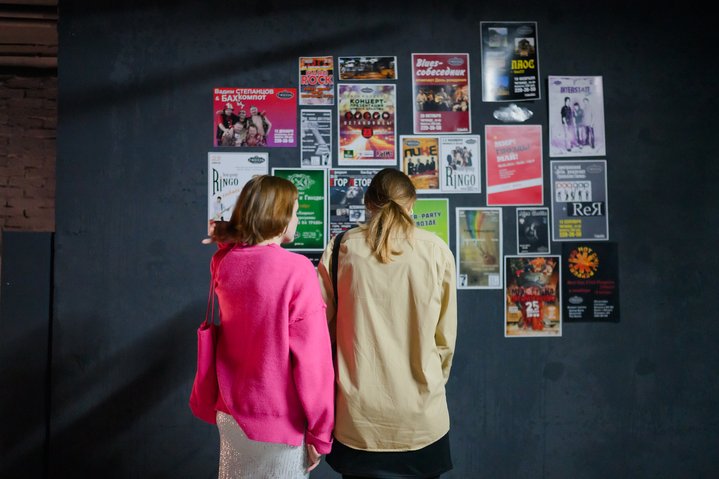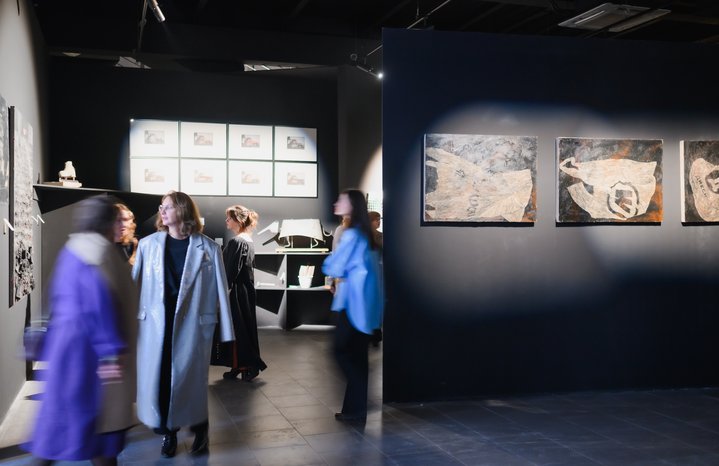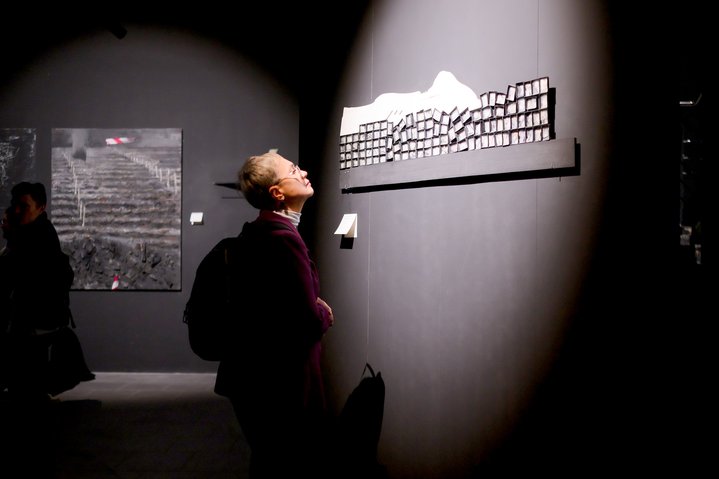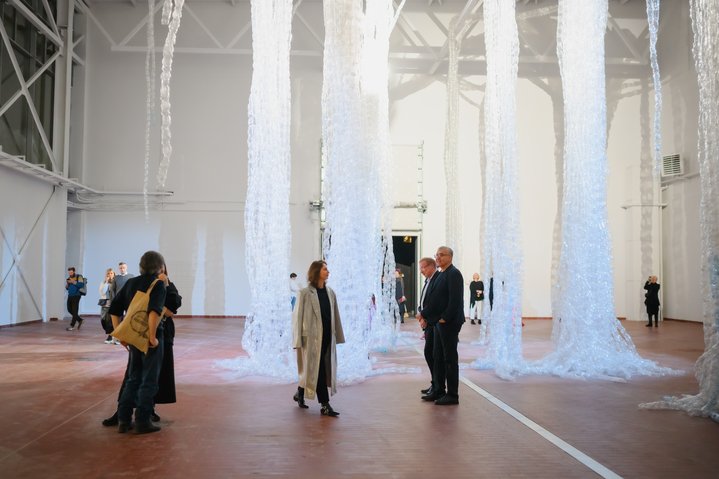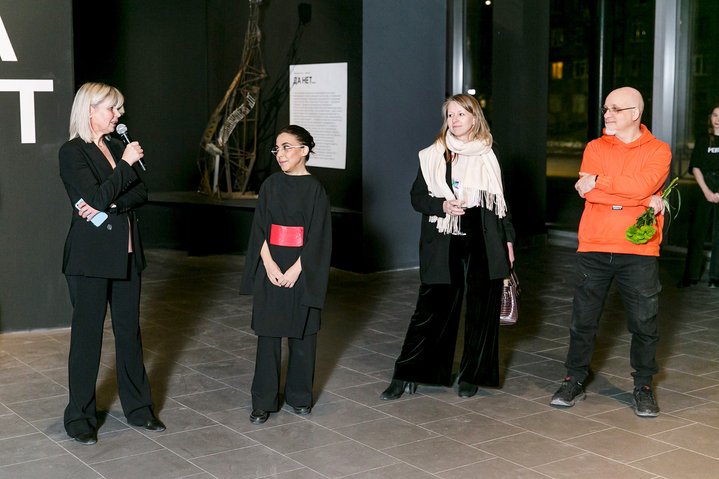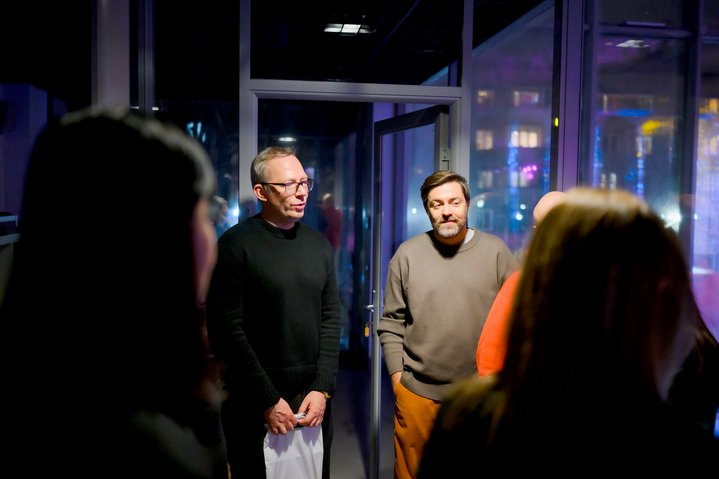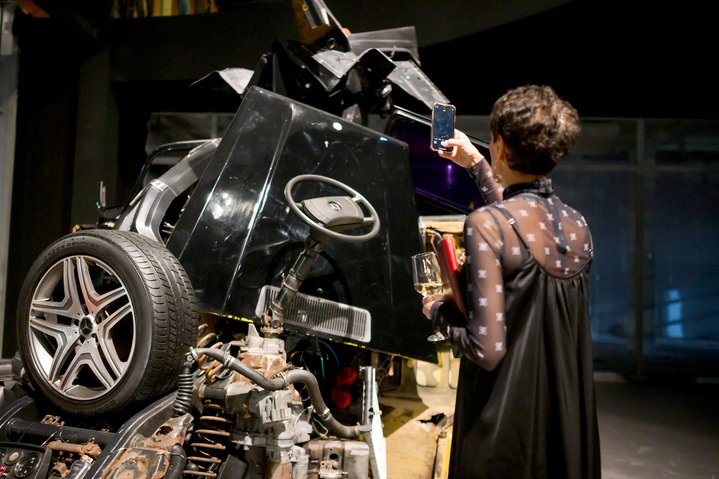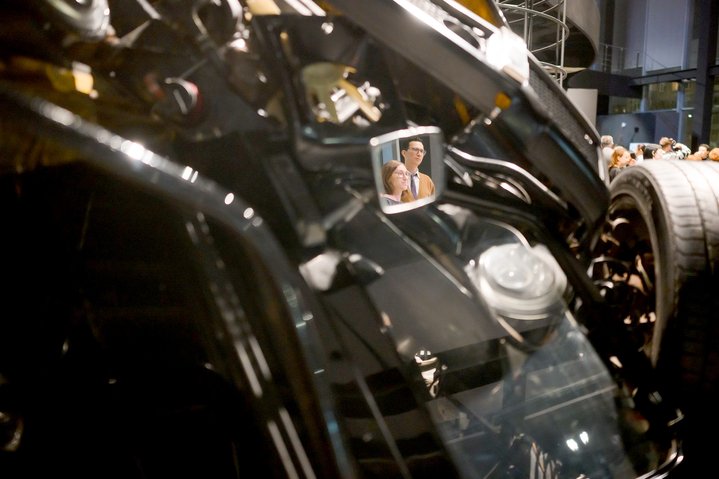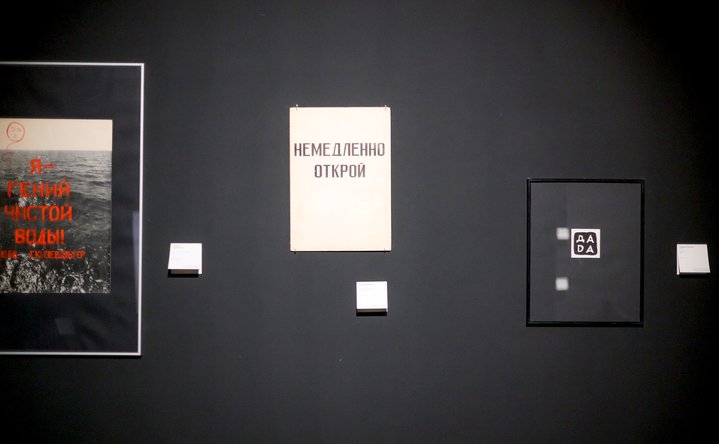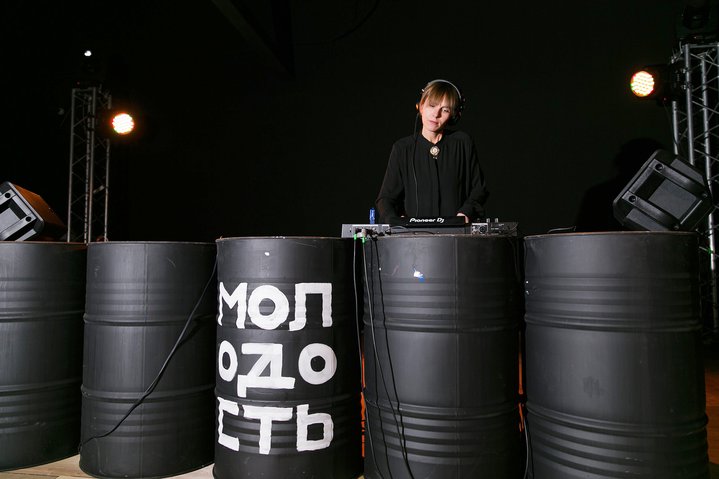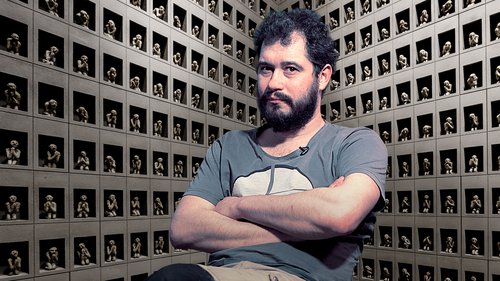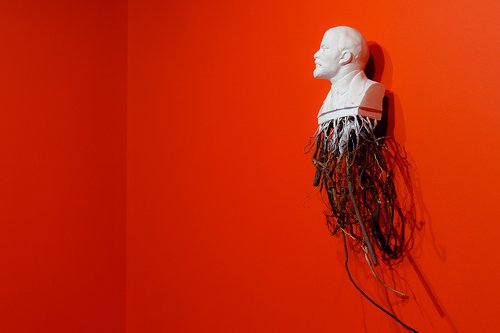A New home for PERMM Museum of Contemporary Art

The opening of the new PERMM Museum for Contemporary Art building. Perm, 2023. Courtesy of PERMM Museum for Contemporary Art
One of Russia’s youngest state museums has taken over a refurbished former car dealership in Perm bringing its collection out into the open after years in storage. Now the public has the opportunity once again to see its collection of contemporary art considered to be among the best in Russia.
"Why are they so small? Why are they so black?" frowns artist Nikolai Polissky (b. 1957). The minivan ferrying guests from the airport to the opening of PERMM’s new building, turns off the motorway into the city. The first thing you see is Nikolai Polissky's monumental art object ‘Perm Gate’ near the railway station. The artist can't hold back: "I told them it should be 20 metres high, not 12! They are not high enough. And they need to coat the logs with protective liquid so that they don't turn black, it's not difficult".
Polissky vividly recalls today how in 2008, he came to Perm with Marat Guelman (declared a foreign agent by the Russian authorities). How they both walked around the city looking for a suitable venue for an exhibition of contemporary art. How they found the building of a former boathouse on the Kama embankment. The exhibition ‘Russian Povera’, which opened in September of 2008, marks the origins of the PERMM museum and the so-called Perm Cultural Revolution, a cultural project in one single region. It was to become a hugely successful initiative which combined state support with private funding and expertise. Entrepreneur and property developer Sergei Gordeev acted as patron of the project, the art dealer Marat Guelman was its curator, and the project was supported from above by Oleg Chirkunov, thengovernor of the Perm Region.
In 2009, museum professional and curator Naila Allakhverdieva headed PERMM's public art programme. In 2011, as a commission for the museum Polissky created his ‘Perm Gates’ – four letters ‘П’ (Russian for P) made from logs and opening towards the four points of the compass. Today, only two public art objects have survived since the heady days of the Perm cultural revolution: Boris Matrosov's (b. 1965) ‘Happiness is Not Over the Mountains’ on the Kama embankment and Nikolai Polissky's ‘Perm Gates’. The PERMM museum, separated from its founders and benefactors, Governor Chirkunov resigned in 2012 and Marat Guelman was fired in 2013, curtailing the entire Cultural Revolution. It has survived two moves over the years and has managed to adapt and evolve.
This current move is PERMM's third. The museum had to vacate the building of the boathouse in the winter of 2014. Although it moved to a temporary location, a former office block in Motovilikha, a working-class district, the museum occupied it for nearly a decade. With the slogan ‘Museum in the Neighbourhood’, the PERMM team staged six exhibitions per year, found its audience, made the museum visible on the cultural map of Russia and established ties with the Perm art community. In 2014, an exhibition by Mikhail Pavlyukevich (1949–2021) and Olga Subbotina (1957), curated by Moscovite Katya Bochavar, became the museum's first project with local artists. In 2015, St Petersburg artist and curator Peter Bely (b. 1971) created ‘Forms of the Unseen’, where works by contemporary artists were shown together with works from Perm Art Gallery's permanent collection and with antique religious wooden sculptures for which the region is known. In 2021, PERMM showed ‘Workers' Village,’ an audio-visual performance created by artist Marina Alexeeva (b. 1959) and composer Vladimir Rannev (b. 1970) based on documents, photographs, and stories of the residents of a communal house. "The performance went on for 40 minutes at a temperature of -21° Celsius". All the spectators stood outside and watched the house 'talking' to them," says Nailya Allakhverdieva.
One of the main disadvantages of PERMM's space in Motovilikha was that the collection could not be exhibited there. Extraordinarily, more than 1,500 artworks remained in storage for more than a decade, although few institutions, including Russian State museum giants, have such an exceptionally broad and representative selection of Russian contemporary art. It could have been even wider – in 2020, Marat Guelman gave another part of the works he had collected for the museum to the State Tretyakov Gallery, the State Russian Museum, and sold about 150 works to Dmitry Pumpyansky, a private collector and Ekaterinburg billionaire and founder of the Sinara Art Centre.
The building of the former Mercedes dealership, on Krisanova street, steps away from Kama river and the city centre is the new address of the PERMM Museum. In just two summer months, some 7620 square metres were refurbished by architect Alexander Leonov. The exhibition space of 2300 square metres was repainted and gutted like the belly of a giant fish.
The move happened so fast that the lifts were out of order on the eve of the opening, and the underground floor still smells like a car repair garage. However, this only adds to the ambiance of the exhibition. Sounds are broadcast from behind grey curtains in modest looking booths - curators Elmira Minkina and Valentin Diakonov reconstruct the history of the emergence, development and extinction of the Perm rock club, present local stars and the musical map of Perm. On the floor above, curator Arseny Sergeyev presents his view of the museum's collections. What began as ‘Russian Povera’is now presented as ‘Russian Material’.
Giant razor blades made of leather by Vladimir Kozin (b. 1953), grotesquely enlarged, loom in a Kafkaesque grey light. Among them, half-hidden like inconspicuous easter eggs, works on paper by Nikita Alexeev (1953–2021), Georgy Kiesewalter (b. 1955), and Yuri Albert (b. 1959) peek out. The complex spiralling route among the objects in the collection leads to a huge hall in the centre, where in a space of 600 square metres, reaching ten metres high there is a huge ‘Banyan’, a recycled-plastic installation by Dmitry Bulnygin (b. 1965). A multitude of transparent plastic bottles, connected with each other like stalks of reeds, sway in the air currents, casting shadows when the light changes, as if they were octopus tentacles luring viewers in from the street. The installation can be clearly seen from the outside through a glass wall. The museum team revels in illuminating the installation in different colours, playing with the location of the projectors. This museum light in the hall is a special source of pride for PERMM. "Do we have many artists in our country capable of creating works for a hall of this scale?" asks artist and curator Katya Bochavar rhetorically. Curator Arseny Sergeyev retorts: "Young people are ready to occupy a space of any size".
PERMM Museum for Contemporary Art







